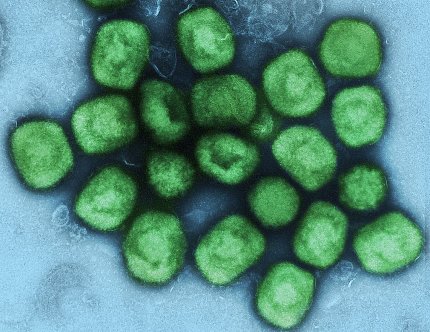Another threat?
Keeping An Eye on Monkeypox
While much attention remains on the Covid-19 pandemic, another virus is circulating that requires health care providers and the public to stay alert—monkeypox.
What is monkeypox?
The monkeypox virus is in the same genus as variola virus (the cause of smallpox). According to the Centers for Disease Control and Prevention, monkeypox is rarely fatal. Initial symptoms include fever, headache, fatigue and swollen lymph nodes, followed by a rash of lesions.
How many cases are in the U.S.?
As of July 24, there have been 2,891 confirmed cases of monkeypox across the country.
Monkeypox spreads through direct contact with body fluids or lesions and indirect contact with contaminated clothing or bedding. Animal-to-human transmission can occur through a bite or scratch or contact with body fluids.
Should we be worried?

Photo: NIAID
“I do not like to use the word worry, because that is an affective response,” said NIAID director Dr. Anthony Fauci during a recent interview with the NIH Record. “I think you should be paying attention to it, take it very seriously and don’t underestimate it. That is one of the problems you get into when dealing with emerging infectious diseases. When you do not take it seriously enough, you can be poorly prepared.”
Fortunately, “we do have countermeasures,” said Fauci, who urges health officials to stay informed and be proactive. There is an FDA-approved vaccine—Jynneos—that can be used pre- and post-exposure, and an antiviral that can help treat monkeypox infections.
With monkeypox, the message is clear: Be prepared; stay vigilant. “We should be doing a lot more testing,” Fauci advised, “and ramp up the availability of countermeasures for it.”
—Dana Talesnik
